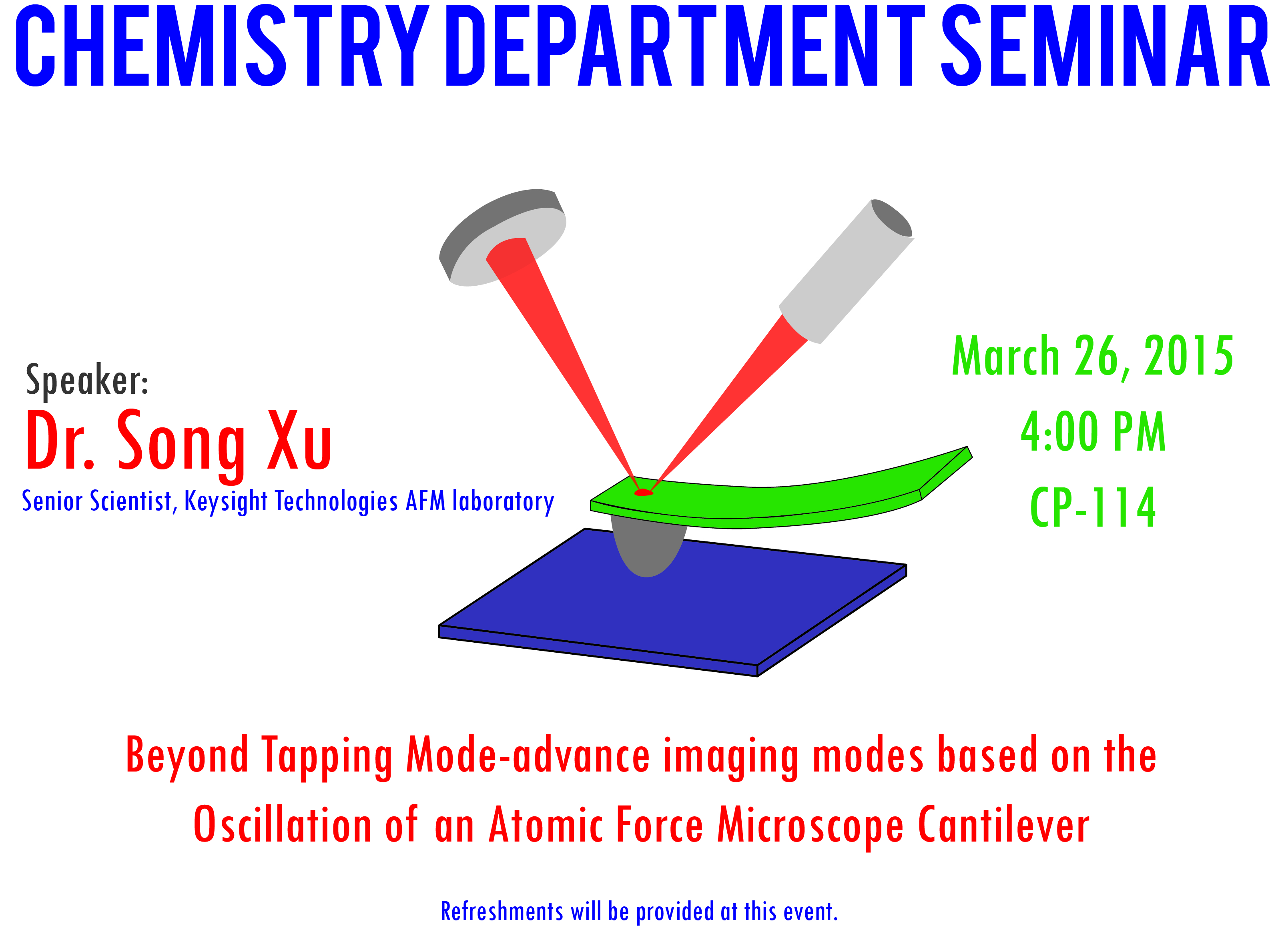----------
Dr. Song Xu of Keysight Technologies will be presenting a seminar titled Beyond Tapping Mode - Advanced Imaging Modes based on the Oscillation of an Atomic Force Microscope Cantilever.
Abstract: We will start with discussing the basics of physics and mathematics of the working principle of Atomic Force Microscopes. The seminar will cover aspects of AFM such as signal driver, the scanning mechanism, the feedback loop and the design concerns, in order to give the audience an overview of the basic principles of this technology.
Tapping mode is a widely used basic imaging mode of Atomic Force Microscopy. In tapping mode, the cantilever is driven to oscillate up and down at near its resonance frequency by a small piezoelectric element mounted in the AFM tip holder. An electronic servo adjusts the height of the cantilever to maintain a set cantilever oscillation amplitude as the cantilever is scanned over the sample while the Z movement is recorded as the topographic (height) image.
The cantilever of an atomic force microscope is a very sensitive force sensor. Various short and long range forces allow high resolution mapping not only the physical shape, but also mechanical, magnetic and electrical property. The forces between the tip and sample could come various physical and chemical interactions, such as electrostatic force, physical repulsive force, van de Waals force, dipole-dipole interaction, magnetic force, chemical bonding, hydrogen bonding, friction etc. Many advanced imaging modes were developed and continuously been developed to map more physical and chemical information of materials. In this web seminar, we will introduce many advanced imaging modes based on cantilever oscillating technology. These imaging modes include Phase Imaging, MFM (Magnetic Force Microscopy), EFM (Electrostatic Force Microscopy), KFM (Kelvin Force Microscopy), and frequency modulated Scanning Probe Force Microscopy. We will discuss the basic physics behind these advanced AC imaging modes, the mathematics of the feedback mechanism and example applications in different research fields.
Faculty Host: Dr. Jason DeRouchey





